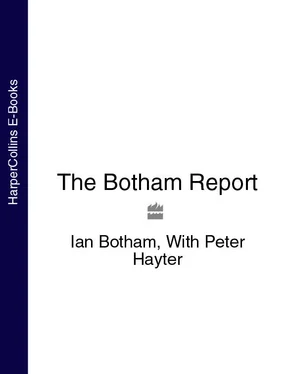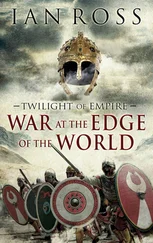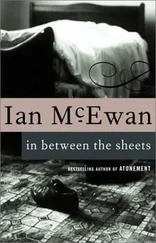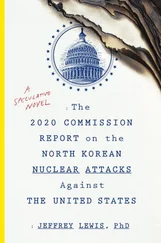Tetley had been sponsoring England’s Test cricketers for four years. In September 1994 they announced a renewal of the sponsorship, which was intended to last until the end of the summer of 1999, during which they had intended to try and capitalise on the global exposure created by the Cricket World Cup being played in England.
But when Tetley informed the Test and County Cricket Board they would be exercising their contractual right to opt out of the deal two years early, it was a wake-up call that could be heard the length and breadth of the country. For the key element in their decision was their dissatisfaction with the continued lack of success at the top level. They simply didn’t want to be associated with a losing team anymore.
When Tetley took up the sponsorship in 1992, they struck gold. Immediately after putting the Tetley logo on their shirts, England won their first Test series for eighteen months. Their 2–0 success on the 1992 tour to New Zealand was their first Test series victory away from home since England retained the Ashes in 1986–87. Following that, Graham Gooch’s side finished runners-up to Pakistan in the World Cup in Australia and New Zealand. Tetley were rubbing their hands together in satisfaction at the success of their marketing ploy.
From that high point, however, England’s record went from bad to worse. They lost eight of their next twelve series, beating only India and New Zealand and when that sequence culminated in 2–0 defeat by Pakistan in the summer of 1996, not surprisingly Tetley decided the time had come to stop backing a losing horse. It wasn’t just the way the team played that persuaded Tetley to turn off the tap; the sponsors were also unhappy with the way England looked and the way they behaved. Market research had told them that although brand awareness had increased during the sponsorship with more people learning about their product, they were not necessarily drinking it – not even when England’s latest abject performance drove them screaming to the bar.
By the time England played the final two one-day internationals in Zimbabwe in 1996, they had been joined by Lord MacLaurin, the new chairman of the English Cricket Board, and Tim Lamb, the chief executive. Perhaps for the future benefit of English cricket, it was as well they were there to watch England’s surrender.
Tim Lamb spoke for himself and his boss when, on England’s return from the second leg of the tour to New Zealand, at the annual general meeting of The Council of Cricket Societies, he said: ‘The England team’s performances over recent years have been extremely disappointing, and I think the way in which the England team have conducted themselves recently is also disappointing.
‘Ian MacLaurin and I were absolutely horrified by what we saw in Zimbabwe. We were very very disturbed by some of the things we came across.
‘We thought David Lloyd’s comments in Bulawayo were completely inappropriate. We were not happy with the way the England team presented themselves. We understand their demeanour was fairly negative and not particularly attractive.
‘I think the way they presented themselves in terms of their dress left a lot to be desired. That was a factor in Tetley Bitter not renewing their sponsorship. Things improved in New Zealand, but there is a long way to go.’ A long way to go? Tim Lamb can say that again.
England did improve in New Zealand. It was almost impossible for them not to do so. But no one was getting carried away by the 2–0 score in the Test series, nor the 2–2 draw in the one-day international matches against New Zealand, who were, without doubt, one of the poorest international sides I’ve ever seen.
Mike Atherton’s team could and should have won the series 3–0. The fact is, however, that the resilience of Danny Morrison and Nathan Astle in the first Test in Auckland and New Zealand’s improved bowling in the third Test in Christchurch meant that without the captain’s batting in that final Test, England may well have finished the Test series having drawn 1 –1. Against a team comfortably the worst-rated in world cricket, that would have been a disaster. As Atherton explained after the series was over, had England not won that three-Test series in New Zealand, he would have resigned, and rightly so.
I say that not because I think Atherton was a poor captain or an unworthy leader. He’s an exceptional player and his batting performances have dug England out of holes of their own creation more often than he, or they, would care to recall. No one who witnessed his magnificent 185 not out to save the second Test against South Africa at the Wanderers Ground in Johannesburg will ever have reason to doubt Atherton’s commitment, determination, professionalism and sheer batting skill, nor his courage. But there comes a time in the career of a captain when no matter what he does, what plan he puts into operation, what words he imparts to his team, nothing works.
Having said that, Atherton has been on a hiding to nothing ever since he took over the captaincy from Graham Gooch in 1993. So was Gooch before him, so was David Gower before him, so was Mike Gatting before him. The reason? – the lack of world class talent produced by a domestic system that belongs in ancient history.
And I believe that fact was borne out by events during the summer of 1997. After starting in such breathtaking style, winning the Texaco Trophy series and the first Ashes Test England were finally exposed and outclassed against the unofficial world champions. Their efforts were laudable and brave and all the rest, but in the end they were just not good enough to win. By the time the Ashes were surrendered Atherton was looking and playing as though he had had a gutful.
In the end, after having reached a decision to quit, Atherton was persuaded to carry on by the selectors against his better judgement. Victory in the final Test at The Oval and the prospect of better things in the Caribbean would have been his motivation – fear over the alternative choices would have been in the minds of the selectors. And when he returned from the 1998 winter tour attached to a scoreline that read West Indies 3 England 1, the man who established a record for the highest number of Tests as captain – 52 – had finally decided enough was enough. And this time the selectors left it at that.
The new enthusiasm originally injected into proceedings by MacLaurin and Lamb at the start of the summer of 1997 had had an immediate affect. Glory be, England thrashed Australia in the Texaco Trophy series and then won handsomely in the first Ashes Test at Edgbaston. ‘Crisis, what crisis?’ came the cry from the counties once more.
As England slumped to yet another Test series defeat at the hands of Brian Lara’s eminently beatable Windies, then the sense of well-being surrounding Adam Holliaoke’s one-day wonder in the Champions Cup in Sharjah was unceremoniously burst by their defeat in the one-day series thereafter. The crisis was still there staring in the face of blind men.
There are those who will react to the question ‘What’s wrong with English cricket’ by saying ‘nothing’. They will claim that fortunes in Test cricket are cyclical, and things will come right if we just wait long enough and leave them well enough alone. That is dangerous nonsense. I am not the only one who believes that either. Just ask MacLaurin.
MacLaurin, to whom the counties turned at the end of 1996 as Chairman of the TCCB, soon to become the England and Wales Cricket Board, is the man who turned Tesco from a family-run business making £12 million worth of profits in 1976 into Britain’s premier food retailer with a profit of £750 million for the financial year to April 1997. In 1976, by now managing director of the company he’d joined as a trainee in 1959, he took on and won a boardroom battle that changed the course of British retailing history. His principal opponent was no Tom, Dick or Harry, but Sir Jack Cohen, the chairman of Tesco, the business he had co-founded in 1926. And the bone of contention just happened to be the brainchild of Cohen and the cornerstone of Tesco’s success for many years, Green Shield Stamps.
Читать дальше












